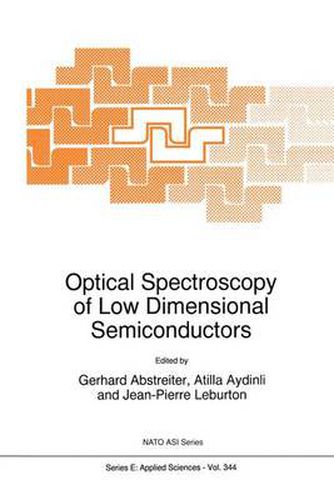Readings Newsletter
Become a Readings Member to make your shopping experience even easier.
Sign in or sign up for free!
You’re not far away from qualifying for FREE standard shipping within Australia
You’ve qualified for FREE standard shipping within Australia
The cart is loading…






This title is printed to order. This book may have been self-published. If so, we cannot guarantee the quality of the content. In the main most books will have gone through the editing process however some may not. We therefore suggest that you be aware of this before ordering this book. If in doubt check either the author or publisher’s details as we are unable to accept any returns unless they are faulty. Please contact us if you have any questions.
Technological advances in semiconductor growth has opened a broad horizon for semiconductor physics and applications during the past 20 years. High quality two-. dimensional systems are achieved with nearly atomic precision by direct epitaxial growth. Such structures led to novel applications like low noise high frequency modulation doped field effect transistors and quantum well lasers. Semiconductor heterostructures of lower dimensionality like quantum wires and quantum dots are not yet as mature, partly due to the lack in precision oflateral structuring technology. In recent years, however, there was an enormous progress in novel epitaxial growth methods. This opens a wide new area of basic and applied semiconductor physics with the hope of novel applications in near future making use of the advantageous properties of one- and zero-dimensional systems. Ideas for future device applications mainly stem from the altered density of states being discrete or atomic-like for quantum dots. Optical spectroscopy has played and is playing a crucial role in the advancement of this fascinating field of semiconductor physics. The NATO school organized at Bilkent University in Ankara and in Antalya brought together experts in this field and newcomers, especially young Ph. D. students and postdocs, to learn about recent developments and to discuss open questions in the area of optical spectroscopy of low dimensional semiconductors. The school turned out to be extremely fruitful and there was a great enthusiasm among the lecturers and students during the whole two weeks.
$9.00 standard shipping within Australia
FREE standard shipping within Australia for orders over $100.00
Express & International shipping calculated at checkout
This title is printed to order. This book may have been self-published. If so, we cannot guarantee the quality of the content. In the main most books will have gone through the editing process however some may not. We therefore suggest that you be aware of this before ordering this book. If in doubt check either the author or publisher’s details as we are unable to accept any returns unless they are faulty. Please contact us if you have any questions.
Technological advances in semiconductor growth has opened a broad horizon for semiconductor physics and applications during the past 20 years. High quality two-. dimensional systems are achieved with nearly atomic precision by direct epitaxial growth. Such structures led to novel applications like low noise high frequency modulation doped field effect transistors and quantum well lasers. Semiconductor heterostructures of lower dimensionality like quantum wires and quantum dots are not yet as mature, partly due to the lack in precision oflateral structuring technology. In recent years, however, there was an enormous progress in novel epitaxial growth methods. This opens a wide new area of basic and applied semiconductor physics with the hope of novel applications in near future making use of the advantageous properties of one- and zero-dimensional systems. Ideas for future device applications mainly stem from the altered density of states being discrete or atomic-like for quantum dots. Optical spectroscopy has played and is playing a crucial role in the advancement of this fascinating field of semiconductor physics. The NATO school organized at Bilkent University in Ankara and in Antalya brought together experts in this field and newcomers, especially young Ph. D. students and postdocs, to learn about recent developments and to discuss open questions in the area of optical spectroscopy of low dimensional semiconductors. The school turned out to be extremely fruitful and there was a great enthusiasm among the lecturers and students during the whole two weeks.